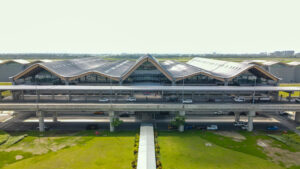MANILA, Philippines —The aviation sector in Asia Pacific, including the Philippines, has shown a strong start for the year as demand for air travel sustained momentum, according to International Air Transport Association (IATA).
Passenger traffic in the region posted growth during the first two months of the year—45.4 percent in January and 53.2 percent in February—based on the latest data of the global trade group.
“Asia Pacific continued to lead the regions in terms of growth, as the comeback of international travel from and to that region continued,” IATA said.
READ: S&P: Asia-Pacific aviation sector on path to full recovery by 2024
The association noted the Lunar New Year celebration boosted the plane ticket sales during the period as tourists went on leisure trips.
Globally, IATA shared that passenger traffic has been rising since the lifting of the COVID-19 restrictions that had curtailed mobility to mitigate the spread of the virus.
Passenger load factor improved by 1.9 percentage points in February from the previous year. A higher passenger load factor indicated “the return of available seat supply and passenger demand on a global scale,” IATA explained.
READ: Airline passenger volume soared by 55% in 2023
Ninoy Aquino International Airport (Naia), the country’s main international gateway, also saw heavier foot traffic during the first two months. In January to February, passenger volume was up 13 percent to 8.04 million from 7.14 million a year ago.
Broken down, international passengers grew by 27 percent to 3.91 million while domestic volume inched up 1 percent to 4.13 million passengers for the period.
Naia is about to undergo a major rehabilitation by September, with San Miguel Corp.-led New Naia Infrastructure Corp. taking charge of the big-ticket project.


